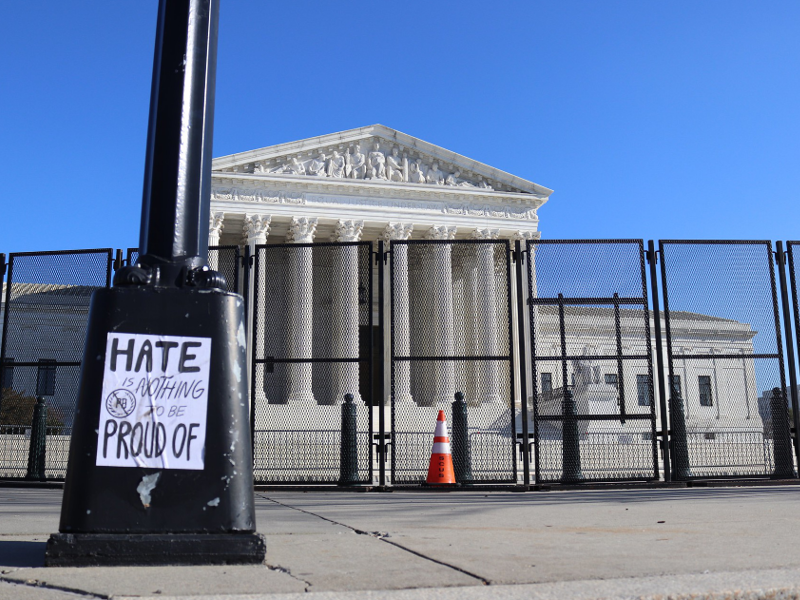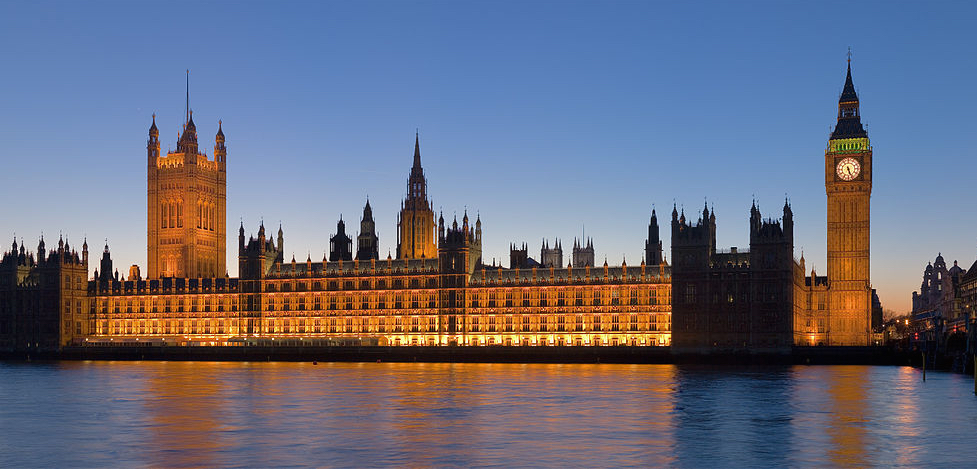It is not shocking to say that the United States’ democratic system is in a precarious state. The criminal charges brought against former president Donald Trump for conspiring to defraud the United States and its citizens (amongst other charges), and the ensuing controversy, showed just how politically divided the nation is. That is, until July 1, 2024, when the US Supreme Court granted presidential immunity to Trump regarding official acts during his tenure in the Oval Office. The ruling opens up a Pandora’s box of questions regarding presidential power and the “Originalist” tradition, as it appears to retroactively render past motions, such as impeachment, ambiguous and potentially inconsequential. As Justice Sonia Sotomayor declared in her dissent, “In every use of official power, the President is now a king above the law.”
This ruling is just the latest of many that have raised concerns over the integrity of the US justice system. With Congress in a constant stalemate and an aging Democratic president with decreasing popularity, it is clear that the US democratic system is turning into a slow-motion car crash, with the Supreme Court as the incompetent driver, steering the car directly into carnage.
The decline of the Supreme Court started well before January 6th, 2021, but the events of the Capitol Riots highlighted for many the state of the US legal system’s decline. In an essay for the South Dakota Law Review, Sean Kammer reflects on how January 6th threw the nation into a constitutional crisis, one that fundamentally changed his approach to teaching law. One could no longer come close to saying that even “straightforward constitutional provisions” were universally agreed upon, particularly when it came to election protocols and democratic principles.
The key issue with the decline of the judicial branch comes down to the fact that the US Constitution is ultimately a “passive object” lacking any will or agency. The text and its derived meaning are wielded by those who interpret and enforce it, and no one is higher up on that list than the black robe-clad judges of the US Supreme Court, who are often appointed based on their political allegiances. In one term, Trump was able to name 234 judicial nominees to courts across America and appointed 3 Supreme Court justices, radically reshaping the ideological makeup of the US judicial branch. With one-third of its judges appointed by Trump, the US Supreme Court acts with a “conservative supermajority” (6 to 3) and securely furthers the Republican agenda when it comes to key judicial issues, such as women’s rights, the Second Amendment, and federal power. The slow response by the Supreme Court to affirm the constitutional principles of a democratic election and hold accountable the perpetrators of the Capitol Riots started to expose the underbelly of the US judicial system and its apparent partiality to Trump.
In 2022, the Supreme Court overturned Roe V. Wade (1973), which had previously granted Americans the constitutional right to abortion. The unprecedented decision issued in Dobbs v. Jackson Women’s Health Organization (2022) “dismantled 50 years of legal protection and paved the way for individual states to curtail or outright ban abortion rights.” Fourteen states have since banned abortion, and several other states have implemented strict regulations on the practice. On the other hand, two subsequent decisions at the end of the Supreme Court’s 2023-2024 term granted Idaho allowance for emergency abortions and upheld access to the abortion pill, Mifepristone. While these latter cases represent progressive victories for women’s health rights, they also demonstrate a pattern of inconsistency within the Court and highlight the tactical sway individual judges have over decisions, with Ketanji Brown Jackson (appointed by Biden) and Clarence Thomas (appointed by George H. W. Bush) being particularly influential. The legal stance on abortion thus remains tense and inconsistent across the nation, with lower courts and lawyers left unsure as to how to interpret these laws in a post-Roe v. Wade world.
The Court passed down a further controversial ruling in June 2024, throwing out the 40-year Chevon precedent, which had “required the courts to defer to the knowledge of government experts in their reasonable interpretation of ambiguous laws.” This June ruling limits the power of federal agencies and grants more power to the Court on “hundreds or even thousands of policy questions… such as who is entitled to overtime pay or how to reduce greenhouse emissions,” with the potential to alter the functioning of the federal government in America.
Several lower courts also spoke out against the inconsistency between two Second Amendment rulings: United States v. Rahimi (2024) which prevented anyone with a domestic violence restraining order from owning a gun, and New York State Rifle & Pistol Association V. Bruen (2022), which maintained that gun laws are unconstitutional unless government can “demonstrate that the regulation is consistent with this Nation’s historical tradition of firearm regulation.” Rahimi essentially creates a very limited exception to Bruen, but offers no clarification on the “historical tradition” test that should guide lower courts on gun regulation.
On the heels of corruption and ethics scandals, the favourability of the Court has plummeted to a historic low, with “fewer than half of Americans (44%)” expressing a favourable opinion of the court. That is a 26% decline from 2020 to 2023.
To preserve some sense of legitimacy, the Court needs, as one legal mind put it, to be “willing to sometimes ‘say what the law is’ in ways that do not serve their personal or partisan preferences.” A commentary published by the Brookings Institute also broke down potential routes for restoring credibility to the Court, including increasing the number of justices, instituting age limits, and introducing term limits. Such measures would ensure “cyclical and predictable turnover” to curb the ability for one government or president to have an exorbitant influence on the judicial agenda. However, the likelihood of the Court altering its decision-making pattern to go against its current agenda is doubtful. While President Biden has backed proposals for judicial reform, “including legislation to establish term limits and impose a binding code of ethics on the justices” similar to those recommendations put forward by the Brookings Institute, the proposals will still require Congressional approval, which is its own uphill battle. With President Joe Biden now stepping aside, and the identity of the next president yet undetermined, the upcoming US Presidential election will determine the future of the US electoral system. The outcome may make or break the chance of judicial reform in America for the entirety of the foreseeable future.
Disclaimer: Any views or opinions expressed in articles are solely those of the authors and do not necessarily represent the views of the NATO Association of Canada
Photo: US Supreme Court along 1st Street between Maryland Avenue and East Capitol Street, NE, Washington DC on Tuesday afternoon (2021) by Elvert Barnes Photography via Flicker. CC BY-SA 2.0




